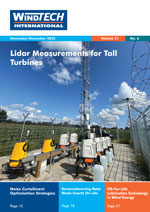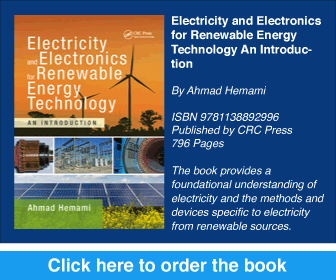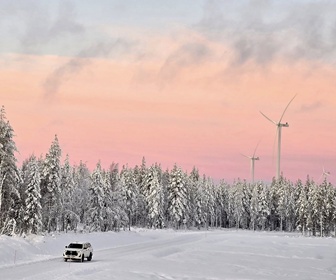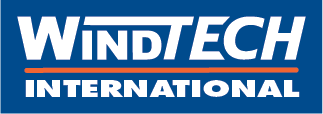- Category: Articles
Offshore Resource Assessment Using a Mesoscale Model and GIS
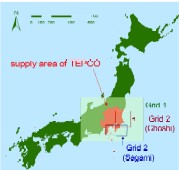 The grid integration of wind energy is an important issue in Japan. Offshore wind development is likely to play an important role in overcoming the limitations of the grid integration of wind energy. This article describes the results from a joint research project by Tokyo Electric Power Company (TEPCO) and the University of Tokyo, including wind resource assessment using a mesoscale meteorological model and a geographical information system (GIS).
The grid integration of wind energy is an important issue in Japan. Offshore wind development is likely to play an important role in overcoming the limitations of the grid integration of wind energy. This article describes the results from a joint research project by Tokyo Electric Power Company (TEPCO) and the University of Tokyo, including wind resource assessment using a mesoscale meteorological model and a geographical information system (GIS).By Takeshi Ishihara and Atsushi Yamaguchi, University of Tokyo, Japan
- Category: Articles
Constant Speed Turbines on a Grid with Variable Frequency
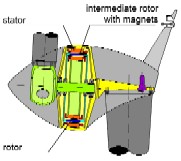 A critical property of an offshore wind turbine is its reliability. The concept presented here aims to improve turbine reliability via the use of a permanent magnet induction machine. This allows the gearbox and converter to be abandoned, thereby reducing the total number of parts. To adapt the rotation speed to the wind speed, a new control concept with just one central converter is used to control the frequency of the park grid. At partial load a maximum power point control is applied to find the optimal frequency. Active stall and pitch control have been investigated at rated load.
A critical property of an offshore wind turbine is its reliability. The concept presented here aims to improve turbine reliability via the use of a permanent magnet induction machine. This allows the gearbox and converter to be abandoned, thereby reducing the total number of parts. To adapt the rotation speed to the wind speed, a new control concept with just one central converter is used to control the frequency of the park grid. At partial load a maximum power point control is applied to find the optimal frequency. Active stall and pitch control have been investigated at rated load.By Eckehard Tröster, Technische Universität Darmstadt, Germany
- Category: Articles
A Global Wind Monitoring and Wind Energy Prediction System
 Some characteristics of wind are, unfortunately, still unpredictable, and this is a significant problem in the employment of wind energy. One of the more serious difficulties connected with measurements for wind energy assessment is the source of the data that is being analysed. It is important that a wind report takes into account which data is being represented, where this data comes from, how weather stations were calibrated, how maintenance and control are carried out, how the data was transmitted, gathered and stored, and how it is represented. The four-year old Aeolus Project has developed software oriented towards wind energy technical survey and its industrial development.
Some characteristics of wind are, unfortunately, still unpredictable, and this is a significant problem in the employment of wind energy. One of the more serious difficulties connected with measurements for wind energy assessment is the source of the data that is being analysed. It is important that a wind report takes into account which data is being represented, where this data comes from, how weather stations were calibrated, how maintenance and control are carried out, how the data was transmitted, gathered and stored, and how it is represented. The four-year old Aeolus Project has developed software oriented towards wind energy technical survey and its industrial development.
By Eric Spinadel, Alejandro J. Gesino and Luis Mariano Faiella, Argentine Wind Energy Association
.
 Some characteristics of wind are, unfortunately, still unpredictable, and this is a significant problem in the employment of wind energy. One of the more serious difficulties connected with measurements for wind energy assessment is the source of the data that is being analysed. It is important that a wind report takes into account which data is being represented, where this data comes from, how weather stations were calibrated, how maintenance and control are carried out, how the data was transmitted, gathered and stored, and how it is represented. The four-year old Aeolus Project has developed software oriented towards wind energy technical survey and its industrial development.
Some characteristics of wind are, unfortunately, still unpredictable, and this is a significant problem in the employment of wind energy. One of the more serious difficulties connected with measurements for wind energy assessment is the source of the data that is being analysed. It is important that a wind report takes into account which data is being represented, where this data comes from, how weather stations were calibrated, how maintenance and control are carried out, how the data was transmitted, gathered and stored, and how it is represented. The four-year old Aeolus Project has developed software oriented towards wind energy technical survey and its industrial development.By Eric Spinadel, Alejandro J. Gesino and Luis Mariano Faiella, Argentine Wind Energy Association
- Category: Articles
Value and Additional Costs of Large-Scale Wind Integration
In the next few years, there are plans to connect a variety of ambitious offshore wind projects to the European grids. In addition to new grid connection lines and grid reinforcement measures it is expected that additional measures for overall system operation will be required because of the intermittent nature of wind generation. In the short term, on timescales from less than a second to several hours, a variety of balancing services are necessary in order to maintain stable system operation. In the long term, wind generation can provide only limited contributions to guaranteed system capacities (e.g. in the event of peak demand). In this article, these aspects are addressed comprehensively when analysing the economics of large-scale intermittent wind generation. An approach is presented to estimate the additional system-related cost elements for different wind penetrations in a system.
By Hans Auer, Vienna University of Technology, Austria
- Category: Articles
A New Approach to Tightening Bolts
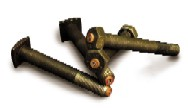 Throughout the world bolts are tightened in accordance with procedures based upon the application of a predetermined torque. However, regardless of the accuracy to which the torque is applied, the actual load present in the fastener can vary by as much as 60%. Factors such as lubrication, thread fits, washer hardness and human error can all contribute to the variability when applying a correct load.
Throughout the world bolts are tightened in accordance with procedures based upon the application of a predetermined torque. However, regardless of the accuracy to which the torque is applied, the actual load present in the fastener can vary by as much as 60%. Factors such as lubrication, thread fits, washer hardness and human error can all contribute to the variability when applying a correct load.By Ben Walters, Managing Director, Scana UK Ltd, UK
- Category: Articles
Finance Supporting Mechanisms to Contribute to a Diversified Renewable Energy Strategy
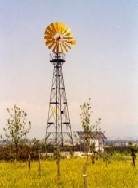 While the market for large wind turbines is almost entirely concentrated in the in-feed of electricity into national grids, small wind turbines (up to 100kW) present a vast range of market opportunities (e.g. in offshore areas, rural areas, private farms or mobile applications). Also in some industrial sector applications small wind turbines are cutting load peaks in times of high energy demand and/or have a green marketing function. Thus, the deployment of a significantly increased number of installations of small wind turbines could have an important impact on the penetration of wind energy and in the renewable energy mix.
While the market for large wind turbines is almost entirely concentrated in the in-feed of electricity into national grids, small wind turbines (up to 100kW) present a vast range of market opportunities (e.g. in offshore areas, rural areas, private farms or mobile applications). Also in some industrial sector applications small wind turbines are cutting load peaks in times of high energy demand and/or have a green marketing function. Thus, the deployment of a significantly increased number of installations of small wind turbines could have an important impact on the penetration of wind energy and in the renewable energy mix.By Rosa M. Tarragó, Molins de Vent Tarragó, Spain and Andreas Wiese, Lahmeyer International GmbH, Germany
- Category: Articles
Internet Services for Planning Distributed Generation Connections
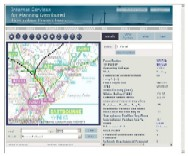 How do you quickly evaluate the capacity of the distribution network to accept a new generation site? This article describes a software development project that provides information on the UK electrical distribution system and offers an initial assessment service for connection of generation plant. The information is presented on a map background and in automatically generated reports, and it is made available on a website.
How do you quickly evaluate the capacity of the distribution network to accept a new generation site? This article describes a software development project that provides information on the UK electrical distribution system and offers an initial assessment service for connection of generation plant. The information is presented on a map background and in automatically generated reports, and it is made available on a website.By Christine Barbier, Peter Reay and Victoria Gosling, Econnect Ltd, UK, and Dave Curry and Angela Morgan, Imass Ltd, UK



